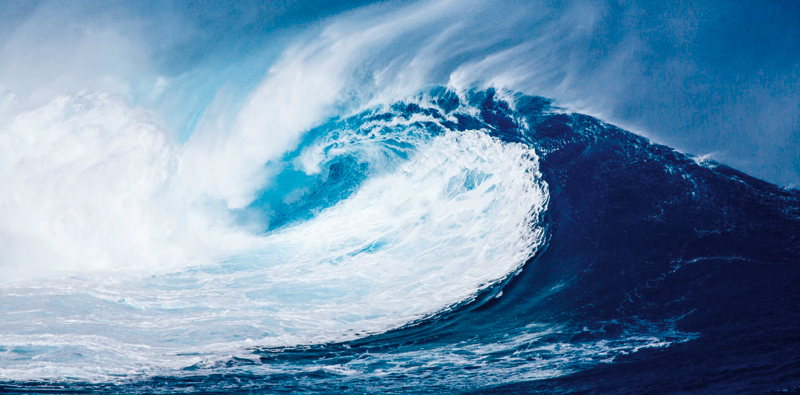

As villagers along the Sunda Strait were finishing their meals on the evening of 22 December last year, they had no idea of the cataclysmic event that awaited them.
After bubbling on and off for months, the active volcano of Anak Krakatoa erupted, triggering a 0.3-kilometre-cubed sized chunk of rock to plunge into the unusually deep waters off the coast of Indonesia’s west Java and South Sumatra regions.
The resulting tsunami, which hit the coast just minutes after the landslide, killed 437 people and injured 30,000 more.
The killer wave was the most recent of a geological phenomenon that has led to around a quarter of a million deaths in the last two decades alone.
And it won’t be the last.
According to David Tappin, a marine geologist at the British Geological Society who has spent years examining the causes of tsunamis, there are at least 40 active volcanoes next to oceans around the world that “could be potential Anak Krakatoas”.
“One of the aspects of events such as Anak Krakatoa is that we are now aware of a hazard hovering in the background and there are millions of people who live adjacent to volcanoes,” he said on the sidelines of the European Geosciences Union in Vienna this week.
“But I don’t think anyone has actually looked at the particular hazard those people have except from eruptions. Suddenly, we are aware of this (threat of tsunamis) and hopefully we will do something about it.”
‘Volcanoes still little
understood’ -
Tappin and his team have for the first time modelled in minute detail what happens when a volcanic landslide triggers a tsunami.
When the rock slipped from Anak Krakatoa, it fell into a submarine trough of unusual depth, around 220 metres (720 feet). This triggered multiple, large waves that hit coastlines quickly, with the second or third waves the highest.
Tappin said that there was currently no system to warn civilians of events like the Anak Krakatoa landslide.
“Warning systems in all the world’s oceans are predicated on large earthquakes,” he said. “Volcanoes are still little understood. Anak Krakatoa is really important because suddenly we have an event we can study.”
Magnitude-10 quakes -
The website of the United State Geological Survey states confidently that mega-quakes, those of magnitude 10 or more “cannot happen”.
Indeed, the strongest quake on record measured 9.6 on the richter scale and there have only been five quakes stronger than 9 in the last 100 years.
It was long assumed that the tectonic make-up of Earth made magnitude 10 earthquakes planetarily impossible: the plates upon which lands and ocean lie aren’t big enough to provoke such a mega-quake.
But a new analysis based on cutting-edge data suggests otherwise.
Alvaro Gonzalez, a researcher of the Center for Mathematical Research in Barcelona, Spain, found that so-called subduction zones — parts of the Earth where one tectonic plate gets pushed deeper towards the mantle by another — could trigger a 10.4 magnitude quake.
And they happen on average every 2,000 years.
“Such events would produce especially large tsunamis and long lasting shaking which would effect distant locations,” Gonzalez said.
‘Global events’ -
There is another way to cause a mega-quake on Earth, of course.
Sixty-six million years ago, a space rock up to 80 kilometres (50 miles) across slammed into what is modern-day Mexico, triggering tsunamis, planetary shaking and volcanic eruptions that killed off the dinosaurs and rendered three quarters of all species on Earth extinct.
Gonzalez said that several more recent — albeit much smaller — asteroid impacts had provoked “impact shaking events”.
By analysing existing asteroid telemetry data, he calculated that shaking events larger than 10.5 magnitude from an impact happen once every 10 million years on average.
“There are only very few people who have tried to simulate something like that,” he said.
“For really, really large earthquakes — 10.5 or larger — those are global events. The (Mexico) impact simulations show that there were several metres of amplitude of ground motion worldwide and especially near the impact and on the antipodes” — the corresponding point on the other side of the globe.
Both Tappin and Gonzalez said existing tsunami warning systems didn’t offer sufficient protection for waves triggered by potential eruptions and mega-quakes.
Referring to the Anak Krakatoa event, Tappin said “it demonstrates yet again the lack of preparedness of countries threatened by tsunamis and highlights the urgent need for better mitigation and warning.” — AFP
Oman Observer is now on the WhatsApp channel. Click here



